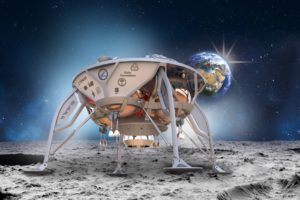
The Beresheet lunar lander built and operated by Israeli not-for-profit company SpaceIL and Israel Aerospace Industries (IAI), and launched by SpaceX from Cape Canaveral, Florida, on 22 February 2019, has successfully arrived in Lunar orbit.
Known as ‘Lunar capture’, the elliptical orbit brings Beresheet within 500 kilometres of the Moon’s surface where it is expected to land sometime this week.
“This manoeuvre enabled the spacecraft to be captured by the Moon’s gravity and begin orbiting the Moon – and with the Moon, orbiting the Earth,” SpaceIL and IAI said in a joint statement on 4 April 2019.
Beresheet – Hebrew for Genesis – weighs 585 kilograms, and if it successfully lands on the Moon’s surface, will make Israel only the fourth country to land a probe there after the United States, Russia, and China. Beresheet is expected to attempt its landing on Thursday, 11 April 2019.
“The lunar capture is an historic event in and of itself – but it also joins Israel in a seven-nation club that has entered the Moon’s orbit,” SpaceIL’s chairman Morris Kahn said on 4 April 2019.
“A week from today we’ll make more history by landing on the Moon, joining three super powers who have done so,” Kahn added.
Beresheet will also be the first privately-owned object to land on the Lunar surface, but carries a scientific payload that will measure the Moon’s magnetic field that should help scientists understand how the Moon was originally formed.
The craft also carries a time capsule that contains digital files of the Bible, children’s drawings, Israeli folk songs, the recorded memories of a Holocaust survivor, and the Israeli flag.
 SpaceWatch.Global An independent perspective on space
SpaceWatch.Global An independent perspective on space




